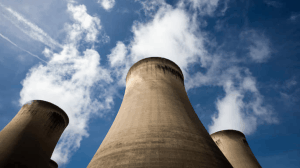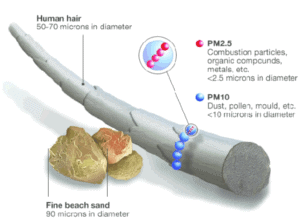 Toxic air is a growing problem across the country and especially in areas such as London.
Toxic air is a growing problem across the country and especially in areas such as London.
Significant steps have been taken in a range of ways, such as congestion charging in London, vehicle manufacturers producing lower emission cars and vans, better insulated homes, which need less energy to heat, the introduction of Ecodesign stoves, increased awareness of burning correctly seasoned wood and so on.
However, there is still more to be done. According to The UK Health Alliance on Climate Change (UKHACC), which represents bodies such as The British Medical Association (BMA), the devastating impacts of air pollution need addressing with a new clean air act.
Laurie Laybourn-Langton, Director of UKHACC, said:
“The UK’s dirty air crisis has gone on too long, inflicting a large cost on our health, with children particularly vulnerable. To date, the government’s response has been too slow and lacked ambition.”
Warnings from the World Health Organisation (WHO), United Nations (UN) and Unicef have echoed these issues, voiced by the UKHACC. According to these (and other) organisations, the problem with air pollution in the UK is at crisis point, with an estimated 40,000 deaths a year attributed to air pollution, with a cost to the economy thought to be in excess of £22 billion.
Children are particularly at risk as a result of air pollution, which is thought to be a key reason behind a number of health complaints, including respiratory conditions like asthma, emphysema and bronchiectasis. Air pollution can cause development issues with children, which can lead to these conditions in childhood or later on in their adult life. According to the Royal College of Paediatrics and Childcare, over 4.5 million children in the UK are affected by toxic levels of air pollution.
Respiratory conditions aside, there are also other health effects, which can especially impact on older people too, including cancer, strokes, dementia and chronic obstructive pulmonary disease.
.
- Bring forward the ban on the sale of new diesel and petrol cars and vans from 2040 to 2030
- Increase investment in active transport to at least £10 per person per year, which is around £4.30 currently
- Develop and increase clean air zones in towns and cities and give financial incentives to homes and businesses to towards more environmentally friendly forms of travel.
According to the UKHACC, they want to legally enforce air standards, which are governed by an independent statutory body to make sure there is consistently cleaner air across all of the UK. They also want to see the creation of an advisory group to help the government with managing air quality.
Essentially the UKHACC want to reduce air pollution levels to as close to zero as possible, in the shortest amount of time. A spokesman for the Department for Environment, Food and Rural Affairs (DEFRA) acknowledged air pollution was “the top environmental risk to human health in the UK” and said that although “air quality has improved significantly since 2010, we recognise there is more to do.

PM2.5 & PM10. The particles behind the pollution!
PM2.5 and PM10 relate to the size of particles in the air (atmospheric particulate matter). PM2.5 is a particle that is equal to 2.5 microns in size, and PM10 is a particle that is equal to 10 microns in size.
PM2.5 is generally considered more dangerous than PM10, as it’s decreased size makes it more able to travel more deeply into our lungs and other parts of the body, causing the significant health issues outlines above.
A PM2.5 particle is around 3% the width of a human hair! PM10 includes dust and mould for example, where PM2.5 is combustion particles and organic compounds – the deadly particles from vehicle emissions, industrial processes and power stations to name just three. It’s these particles, which need to be reduced, and this can only be done by continuing the pressure for a cleaner, greener more sustainable environment.








